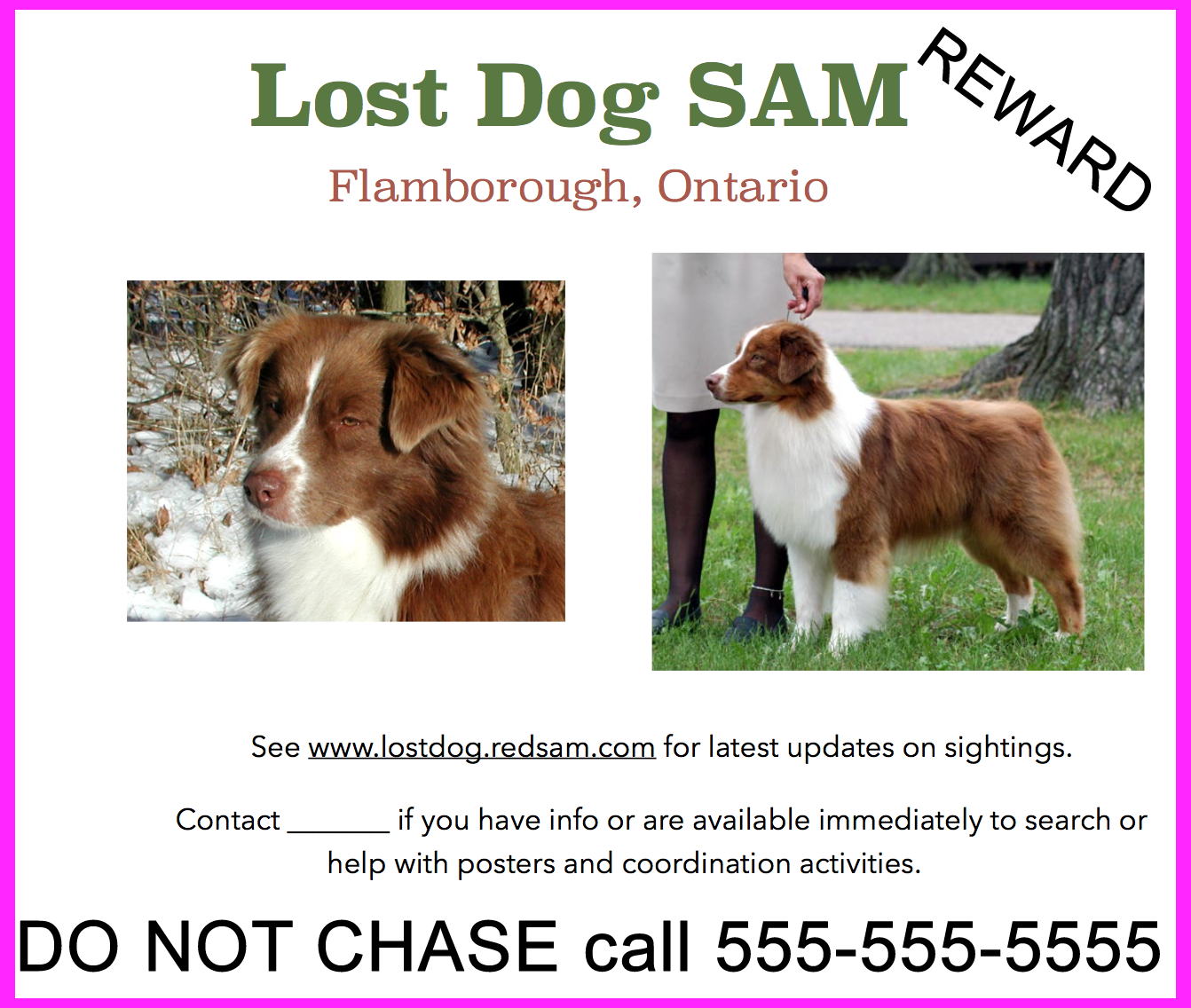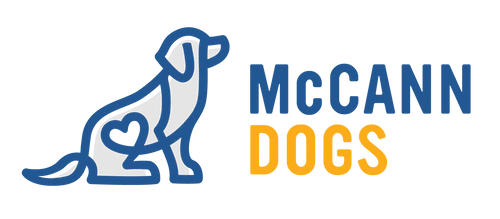![]() Listen to the Podcast
Listen to the Podcast
When a dog belonging to one of our staff members went missing, we all had a bit of a wake up call. Firstly, it reminded us that this could happen to anyone.
Even though we are knowledgeable and extremely careful with our dogs and despite how well trained they are, there is really no predicting when disaster might strike. Secondly, we didn’t realize how little we knew about the search process including the use of traps, tendencies of dogs when lost, utilization of social media to help, etc. Lastly, we realized how ill prepared most of us are. Even a small thing such as having good, recent photos readily available is something most of us hadn’t considered. Despite the abundance of photos most of us take of our dogs, having decent photos that would be suitable for a “Lost Dog” poster handy is important to expedite the process.
With these details in mind, we have given some thought to preparedness and wanted to share with others in case you find yourself in this horrible situation. We hope you never do, but a little planning could make a big difference.
Tracking devices that Might Help Find a Lost Dog
The first thing we learned about tracking devices is that they are far from perfect at this point. Do your research before settling on a brand. Find one that is well made and has a decent accompanying app or remote device. Accuracy and functionality is important and good battery life is also something to consider. Be sure the device has decent range. Dogs can cover a lot of distance in a short period when they are running. If your device is good for short range only, it may not be helpful.
Preparation to Help you Track a Lost Dog
Have information you’ll need ready so that in the event of a lost dog, you can maximize your initial search. This should include pictures and important information such as dog’s height, weight, distinct markings, medication requirements if applicable and any other pertinent details that may help expedite the dog’s safe return. Create a checklist with all of these details that you can access immediately in the event there is an incident.
Poster of Your Lost Dog to Aid in the Search
Have a notice at the ready so that if your dog is lost, the checklist and notice can be sent out quickly to a wide number of people. The notice should include a current picture, location and the owners contact information. Be sure to use a cell phone number so you can be out searching and still get leads from other sources.
If ready and pre-populated, both of these documents can be communicated immediately in the event a dog is lost and it would maximize the efficiency of the early search.

Checklist to Facilitate the Search for a Lost Dog
Next is a checklist. If you lose the dog, having a plan in place is crucial. When the dog disappears is not the time to develop a plan and you won’t want to waste time Googling ideas. Have a checklist ready that you can refer to. This should include everything you will do. Such things as online details to be posted, local shelters and vet clinics to contact, etc.
Friends to Help in the Search for a Lost Dog
Have a distribution phone list set up so that you can immediately communicate to a reasonably large group. Perhaps a phone tree so you can get out searching while the word spreads amongst your contact list. Contacting people directly is the most efficient method as friends in the area may be available, but may not check Facebook for several hours.
Reference Material to Help in the Search for a Lost Dog
It’s a good idea to have reference material and instructions ready for copying. Things like instructions on how to do a grid search, any instructions that may go with tracking collars, live trap availability and locations that rent them, media contacts to get the word out, etc.
Identification on the Dog
Having solid identification on the dog is always good practice. Consider multiple forms of identification to try to cover all bases. Microchips are a wise investment, but will only help if your dog is picked up by an organization with a scanner - and it must be the right scanner to read the chip. Different brands of microchips require different scanners. In addition, often microchips will migrate from where they are implanted in the dog. An organization may scan and not find the chip. We recommend that in addition to microchips, a collar with a phone number and/or a tag with contact details are on the dog at all times in the event they wander off or are somehow misplaced.
Puppies are often tattooed, however tattoos fade or can stretch over time and can become difficult or impossible to read, so a chip and collar identification are usually the better route to go.
Be sure that the phone number that is on all identification is a current cell phone number. In all likelihood, you'll be out searching for the dog should they go missing, so you want a phone number you'll be able to answer when away from home.
Pre-Existing Webpage and/or Facebook page to Speed up the Spread of Information
Setting up a quick web and/or Facebook page could really help to spread the word in a hurry. There are plenty of free web hosting sites and Facebook is free to use, so it is not cost prohibitive to have these done ahead of time. That way, an announcement can be put into use at a moment’s notice.
Download this Lost Dog Emergency Plan. Having a plan in place can help you to avert the disaster of a lost dog. Much like an insurance policy, we hope to never use it, but when we need it – it makes all the difference in the world!
As always, Happy Training!

